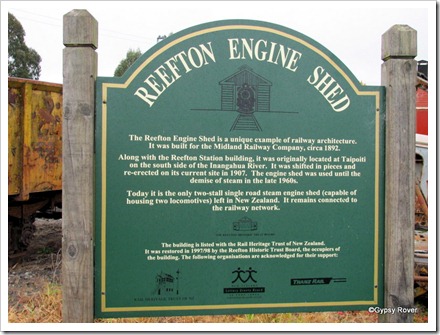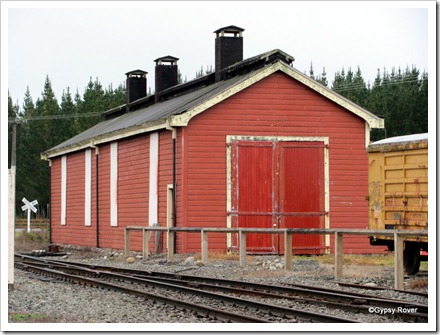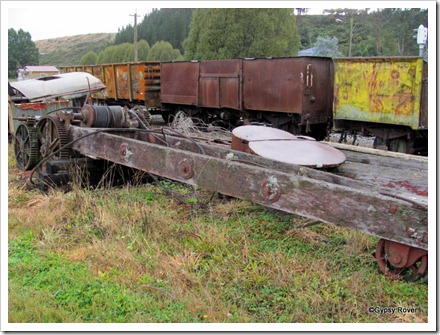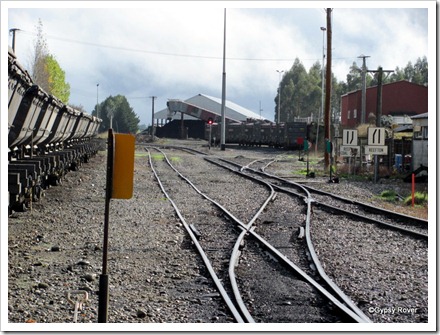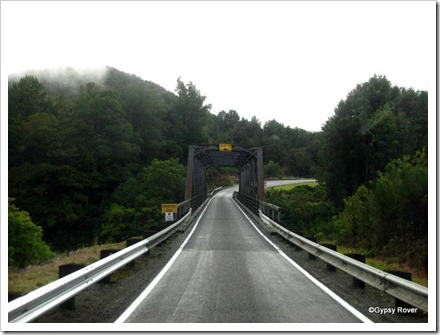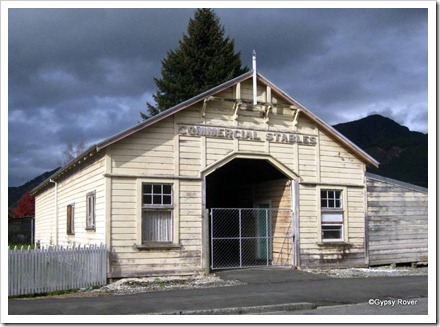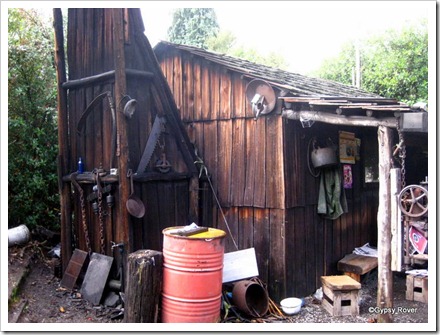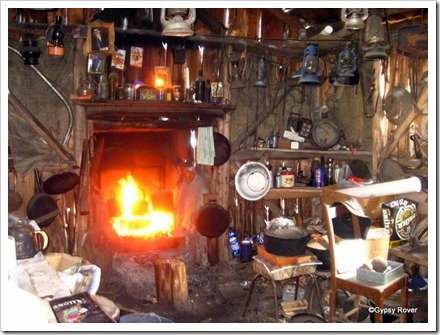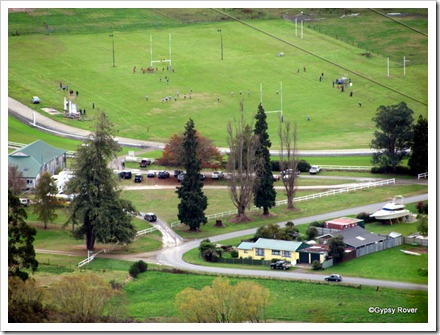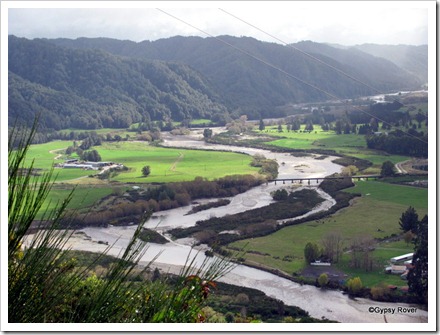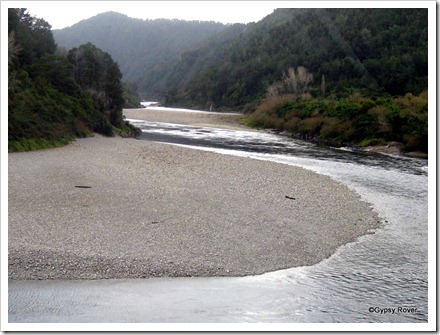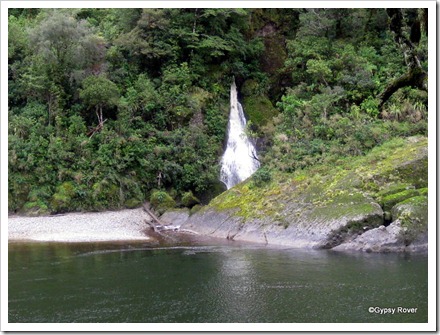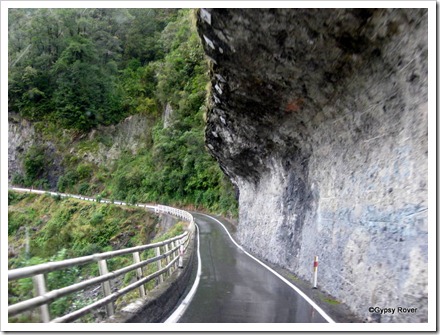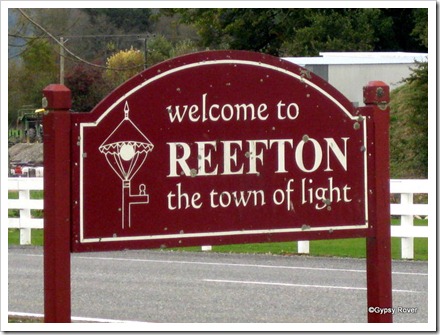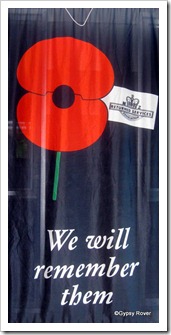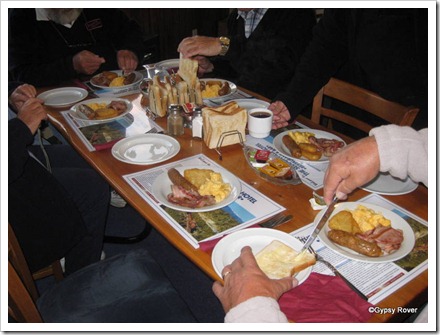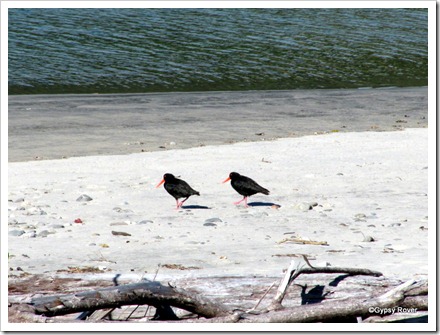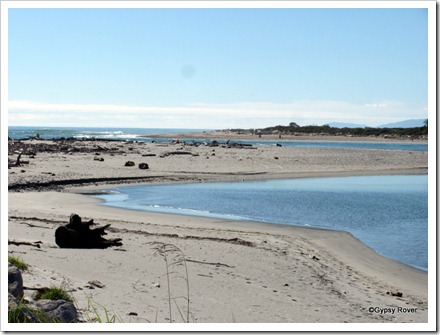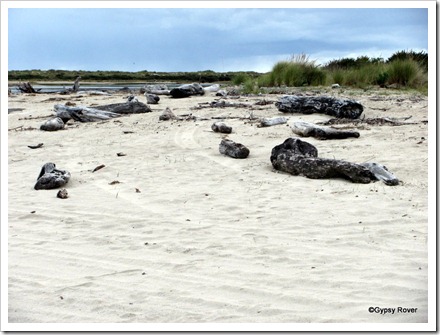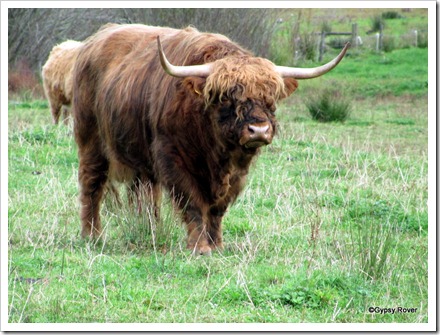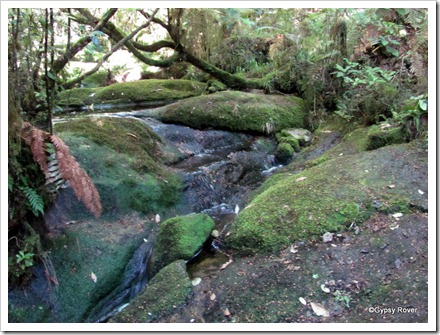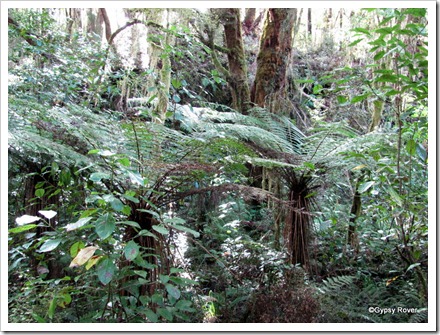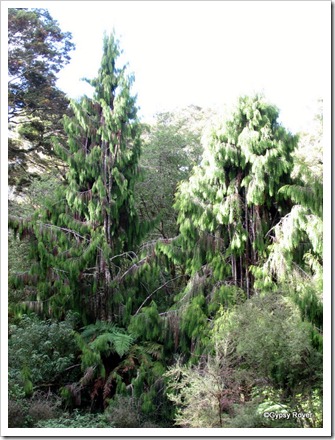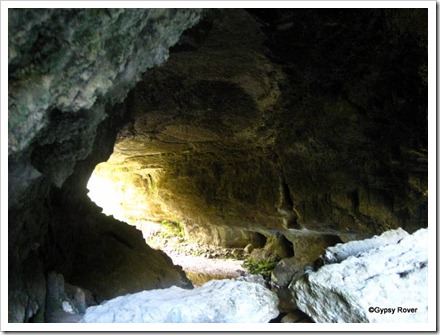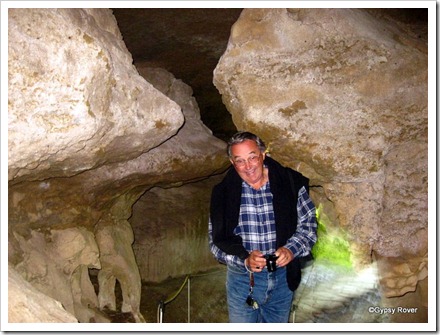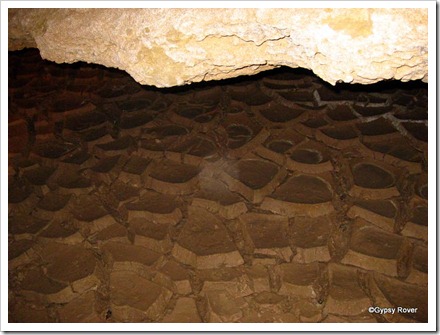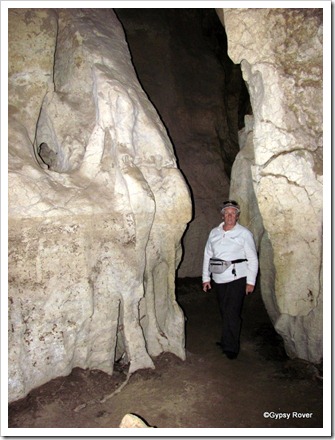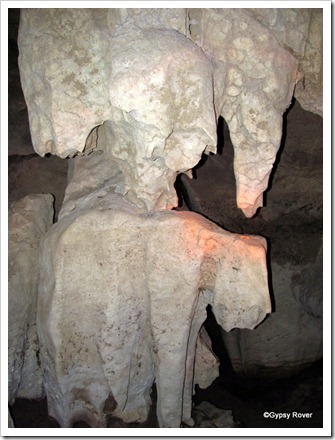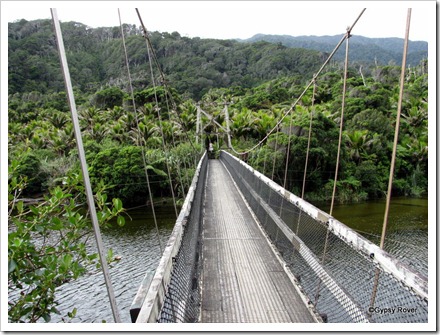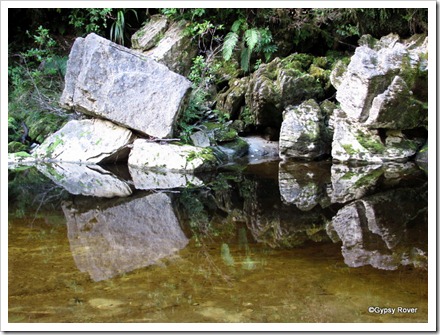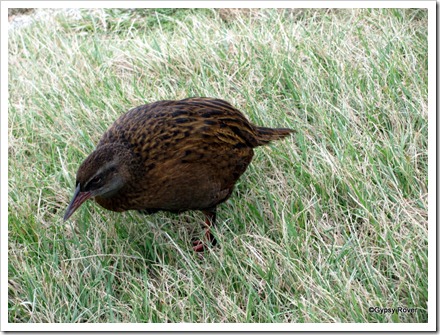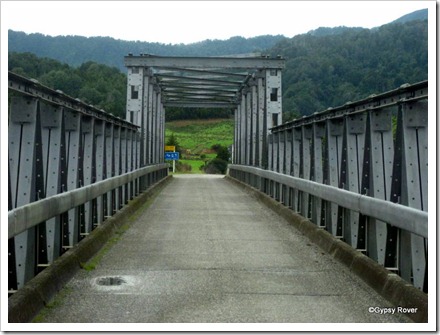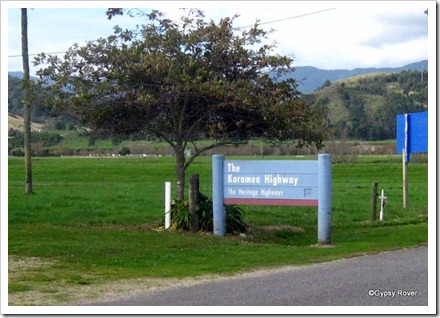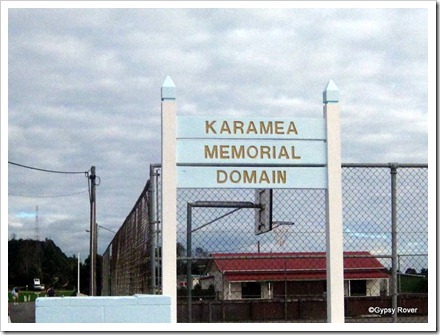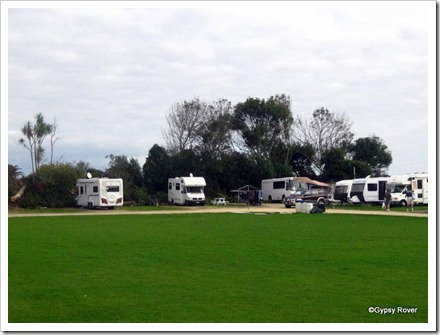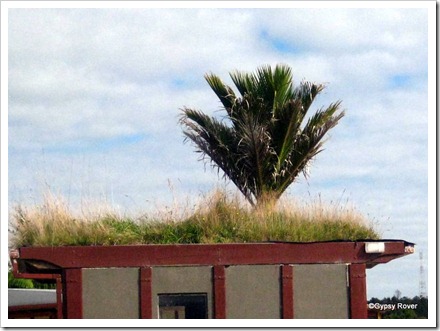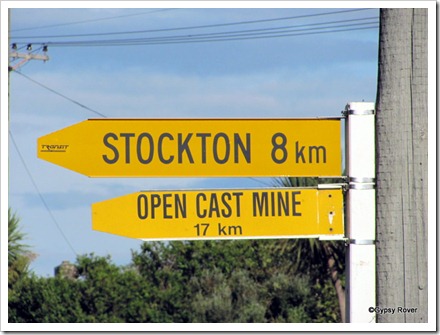 The town no longer exists, just the mine.
The town no longer exists, just the mine.
We had booked a tour with Outwest Tours of the Stockton Mine today. We duly met at the agreed pick up point in Granity and hopped on the Unimog 4x4 which was to be our transport for the day. While getting ourselves organised with the driver we commented on a hot brake or clutch smell emanating from the vehicle. The lady driver agreed but said that it had only been tested for it’s Certificate of Fitness yesterday.
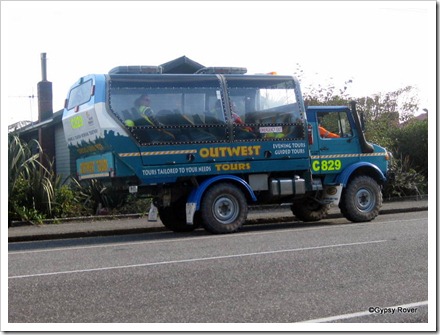 The Unimog that was supposed to take us on our mine tour.
The Unimog that was supposed to take us on our mine tour.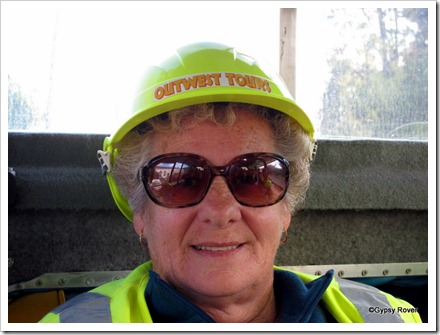 All set for a hard hat adventure to the Stockton mine.
All set for a hard hat adventure to the Stockton mine.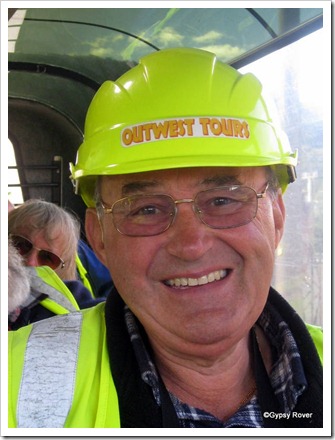 Yours truly.
Yours truly.
Arriving at the railhead at Ngawakau Rosetta our driver proceeded to the engineers workshop where she spoke to a mechanic who just happened to be her brother in law. They all know each other in these small mining communities. After a phone call to her boss it was announced that due to mechanical failure the tour was to be cancelled. As we would be travelling over some steep tracks it was deemed unsafe with suspect brakes.
 Empty buckets on the left full on the right.
Empty buckets on the left full on the right.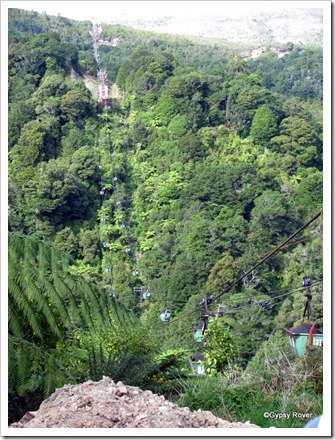 The cable's between stations 5 and 6 on the way to the rail head at Ngakawau.
The cable's between stations 5 and 6 on the way to the rail head at Ngakawau.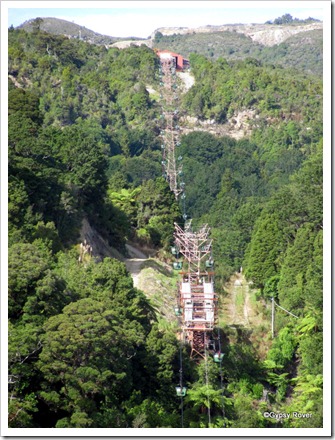 The next cable change over across the valley.
The next cable change over across the valley.
However all was not lost as the Mining company offered to take us in small groups to view part of the operation in their own 4x4 vehicles. We were taken up to the first change over point for the aerial cableway between the railhead and the mine some 7km’s inland.
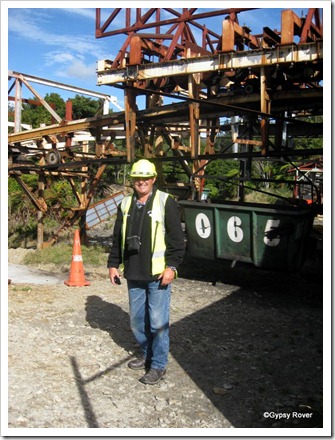 Yours truly at station 6.
Yours truly at station 6.
Here we saw how the buckets were automatically transferred from one cableway to the next. In all there are 4 cableways bringing the coal from the mine to the railhead. The only time the cableway stops is for a few hours on Tuesday and Friday for maintenance, in the meantime stockpiles of coal are built up at the railhead so as not to delay the train timetable which amounts to 5 trains a day.
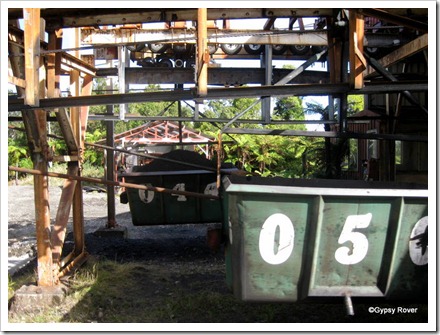 An empty bucket passing through while a full one heads down to the rail head.
An empty bucket passing through while a full one heads down to the rail head.
Purpose built wagons which load through the top and empty through the bottom each carry 50 tons. There are usually 30 wagons to a train which are hauled by 2 locomotives to Otira where 3 more locomotives are added to haul the train through the tunnel across Arthurs Pass. There is talk of adding further wagons to the trains to increase the tonnage moved.
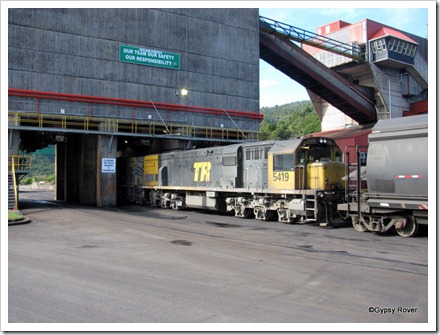 The train slowly proceeds under the hopper.
The train slowly proceeds under the hopper.
The day turned out not to be a total disaster and the boss of Outwest Tours authorised a full refund. Some of the group tried to book a later tour but for us that is not an option unfortunately.
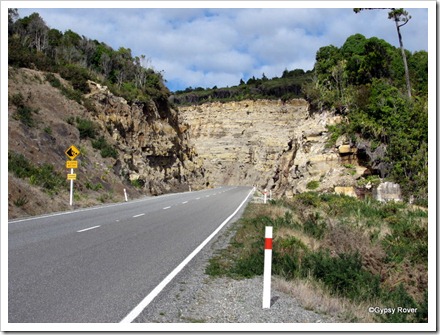 The road to the Stockton mine nick named the "Grand Canyon" by the miners.
The road to the Stockton mine nick named the "Grand Canyon" by the miners.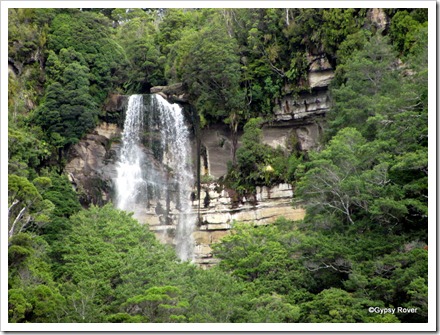 What you don't see from the main road.
What you don't see from the main road.

